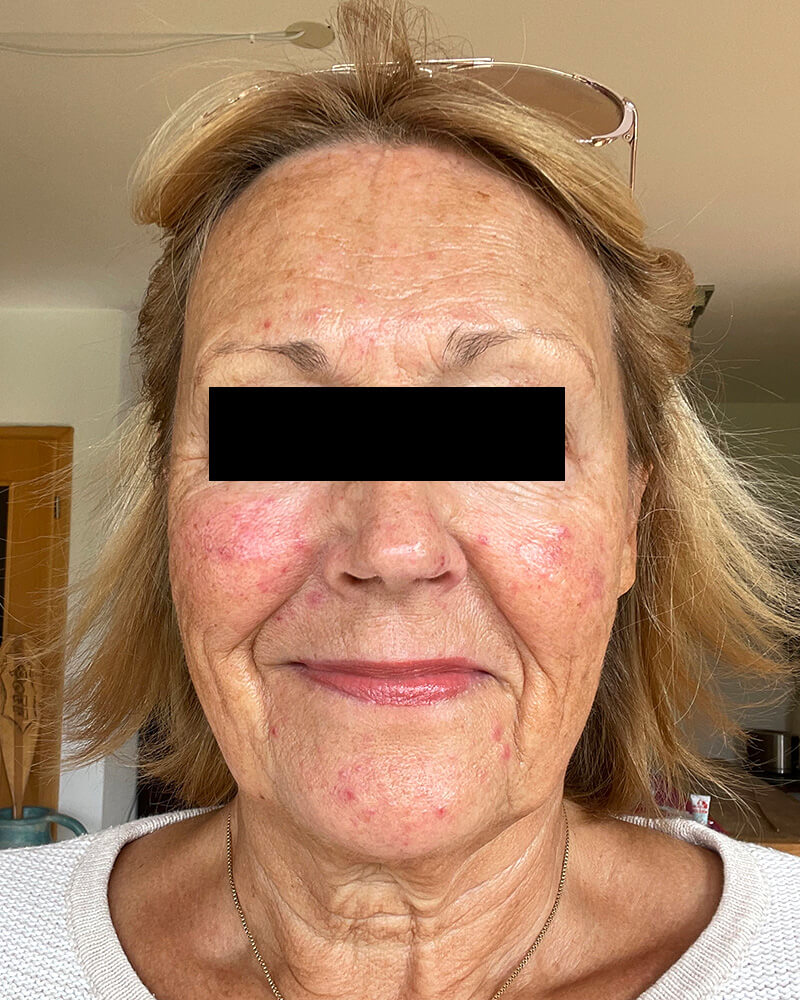 Does rosacea become less of an issue as we age? Or is it just less commonly diagnosed? Two recent studies aim to shed light on this puzzling phenomenon.
Does rosacea become less of an issue as we age? Or is it just less commonly diagnosed? Two recent studies aim to shed light on this puzzling phenomenon.
According to a study published in the journal Immunity, Inflammation and Disease, the lower incidence of rosacea in the elderly may be a result of an aging-related impaired immune response.1
Noting that epidemiological studies2-4 show that the occurrence of rosacea peaks between the ages of 30 and 50, the researchers reported similar findings in 8,340 individuals free of systemic diseases from the Xiangya Hospital in Changsha, China. The highest rate of rosacea, at 4.5%, was in the 25-44 age group, they said, followed by a noticeable decline to 2.9% in those 45 to 64 years old, and 0.9% in those aged 65 and older.
To further investigate this trend, they injected mice with the cathelicidin LL37 – a factor in the innate immune response thought to contribute to rosacea by inducing inflammation and promoting blood vessel growth. Whereas the skin of younger mice, aged 2 months, displayed pronounced rosacea‐like features that worsened with successive doses, the skin of older mice, aged 20 months, showed milder redness, lighter coloration and reduced area involvement.
In addition, the researchers analyzed mouse keratinocyte (MK) samples treated with LL37 in vitro for a variety of characteristic disease-related molecules found in rosacea patients, including KLK-5, CAMP, TLR2, TNF-α, MMP-9, and MMP-2. They found that LL37 significantly increased the levels of these factors in the MK samples from 2-month-old mice, which exceeded the levels observed in samples from the older mice.
“These findings indicate a compromised ability of the aging immune system to mount effective responses to pathogens and external stimuli,” the researchers said.
However, the authors of a research letter in the Journal of the American Geriatrics Society suggests a very different explanation for the decreased incidence in the elderly: it may simply be underdiagnosed.5
Investigators in Finland performed a retrospective cross-sectional study of 1,306 individuals. Five hundred twenty-two individuals ranging in age from 70 to 93 accepted the invitation for a full clinical examination, and were also asked to fill out a detailed health questionnaire that included the question, “Has a doctor ever diagnosed you with rosacea?”
About a quarter (137) were diagnosed with rosacea during the study. Of those, only 10 reported having previously received a rosacea diagnosis. Among subjects who did not receive a diagnosis of rosacea during the researchers’ examination, 11 reported a previous diagnosis in the survey, while rosacea was listed in the electronic health records of three others. None of those who were previously diagnosed received it via a primary care visit. The researchers noted that their results support findings from a US study, which found 80% of rosacea sufferers are undiagnosed.6
The investigators suggested that time constraints at primary care visits may hamper the ability of physicians to identify rosacea. They also noted that the persistent redness and visible blood vessels (telangiectasia) of rosacea may be mistaken by some doctors as normal signs of aging.
Taken together, the two studies may leave older patients confused as to whether rosacea is something you can escape with age. Further research is needed to answer that question. These findings underscore the importance for older patients who are worried about their skin to see a dermatologist who can take the time necessary to identify rosacea and other skin-related issues.
References:
1. Long J, Deng Z, Chen M, Tangxiele L. Impaired angiogenesis and Th1/Th17 polarization: a possible explanation for the decreased incidence of rosacea in the aged. Immun Inflamm Dis 2024 Dec18;12(12):e70108. doi: 10.1002/iid3.70108.
2. Li J, Wang B, Deng Y, et al. Epidemiological features of rosacea in Changsha, China: a population‐based, cross‐sectional study. J Dermatol 2020;47:497–502, doi: 10.1111/1346-8138.15301.
3. Rueda LJ, Motta A, Pabón JG, et al. Epidemiology of rosacea in Colombia. Int J Dermatol 2017;56:510–513, doi: 10.1111/ijd.13491.
4. Abram K, Silm H, Oona M. Prevalence of rosacea in an Estonian working population using a standard classification. Acta Derm Venereol 2010;90:269–273, doi: 10.2340/00015555-0856.
5. Jäntti J, Jokelainen JJ, Huilaja L, Sinikumpu SP. Rosacea is an underdiagnosed disease among subjects aged over 70 years. J Am Geriatr Soc 2025 Apr 24. doi: 10.1111/jgs.19488. Epub ahead of print.
6. Wehausen B, Hill DE, Feldman SR. Most people with psoriasis or rosacea are not being treated: a large population study. Dermatol Online J 2016 Jul 15;22(7):13030/qt4nc3p4q2. PMID: 27617716.